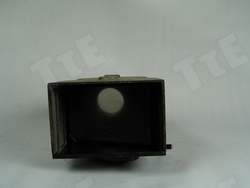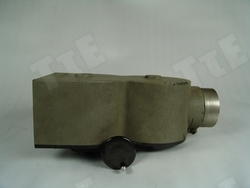Screening
Return
TUSHINSKY Superscope anamorphic lens
This is an anamorphic lens adjusted in a projector. During World War I, Henri Chretien introduced the ‘Hypergonar’ lens, which was able to cover a 180° field of vision. It was first used in the cinema by Claude Autant-Lara in 1928 in the ‘silent’ short film 'Construire un feu'. In 1952, 20th Century Fox purchased the rights to the system, which it improved. The result was triumphantly presented in the film ‘The Robe’, in 1953, which had been filmed with the revolutionary system ‘Cinemascope’. Then, other studios developed their own wide screen systems, with names like 'Cinemascope', 'Panascope', Warnerscope', 'Superscope': the last of which was one of the first ‘type-scope’ wide screen systems, and one of the first productions in which it was used was the film ‘Vera Cruz’ of 1953, directed by Robert Aldrich. The image occupied the entire surface of the film up to the ‘perforations’ and with a “mask’ a frame was created whose width was double its height. Next, the image was compressed horizontally in a laboratory and was widened vertically to be placed in an anamorphic ‘frame’. In the process of projection, it was decompressed by a lens (this specific exhibit) and was projected on a wide screen. It was manufactured in the middle of the decade 1950-60. [On the inside of the lens was written its serial number: 33].






